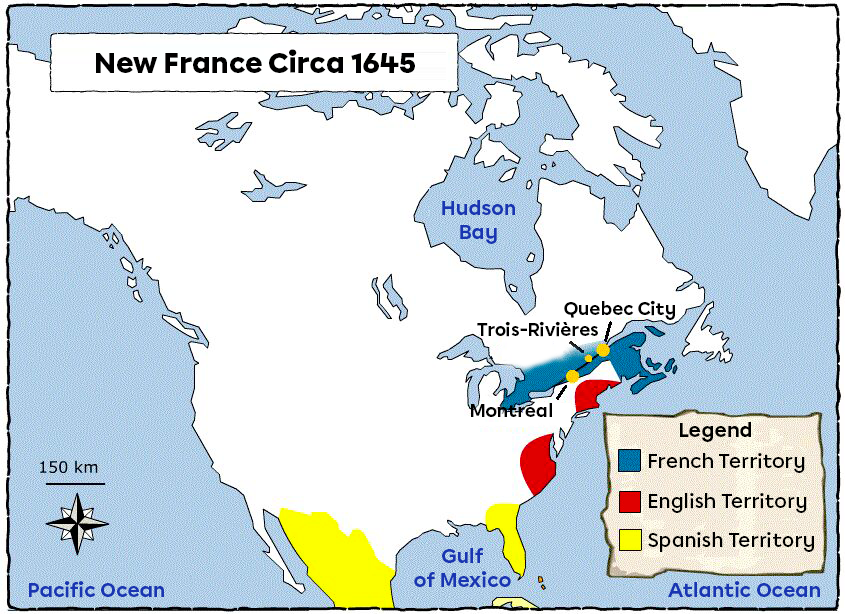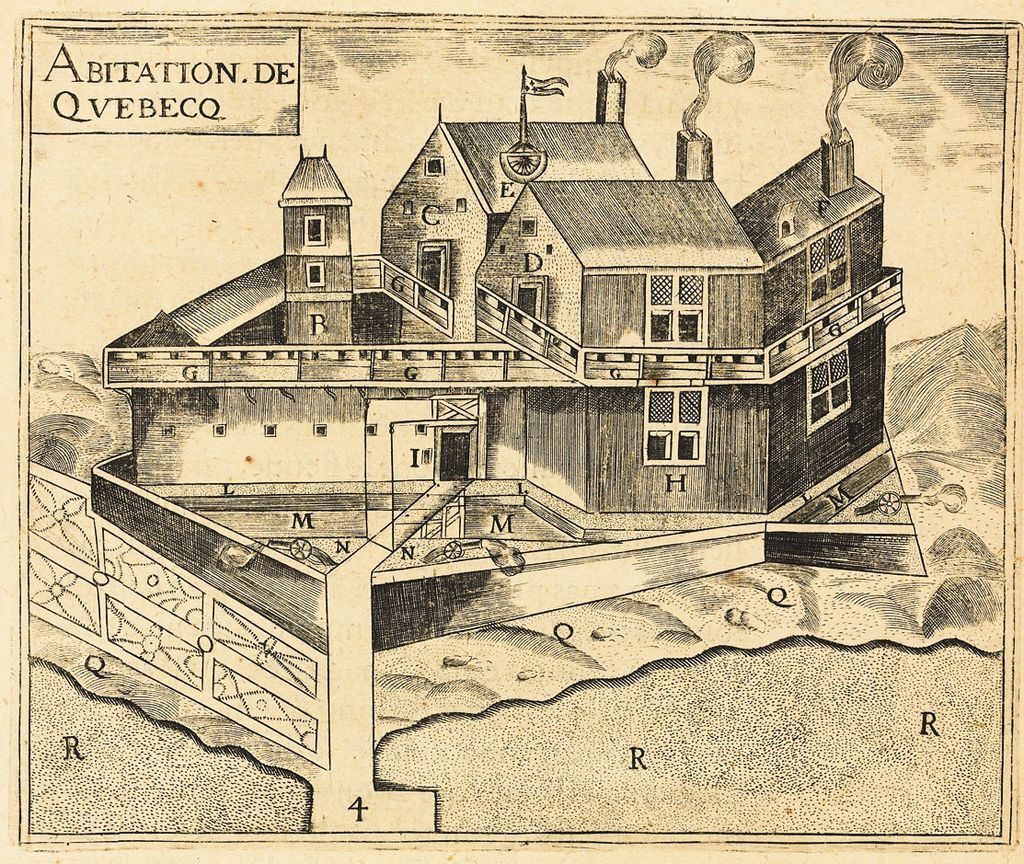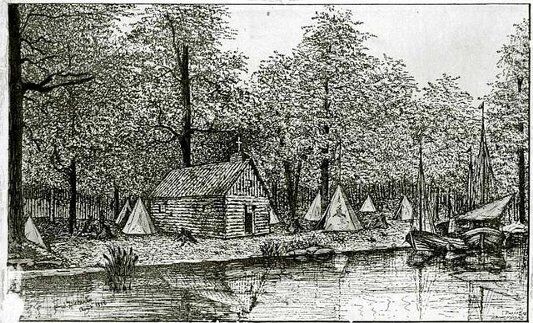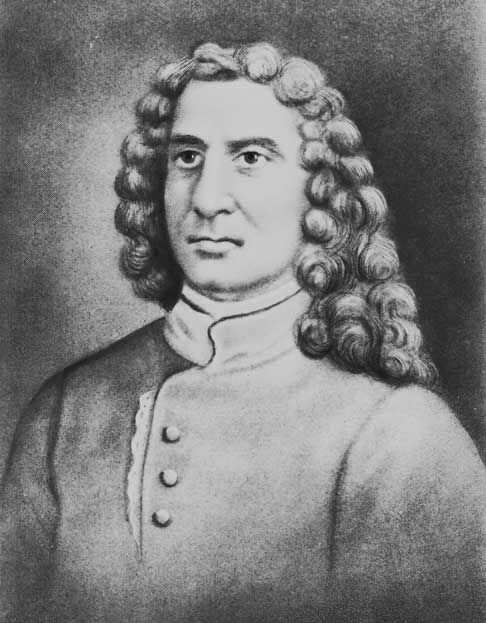It was in the 17th century that the European mother countries’ desire to found new colonies on American soil became reality. Two types of colonies could be created: trading posts and settlement colonies.
|
Trading post
|
A place where raw materials were traded. The sole purpose of the colony was to provide the mother country with raw materials. The territory was temporarily occupied by Europeans who wanted to manage the trading post. |
|
Settlement colony |
A territory used to exploit raw materials and to establish colonies. The territory was occupied by Europeans who settled there permanently. |
In the early 1600s, several companies were attracted by the fur trade in New France. Henri IV wanted to establish a settlement colony and granted the companies a monopoly on the fur trade to help develop his colony. In exchange, these companies agreed to populate the land. They had to bring over a certain number of colonists every year, distribute the land, help the first colonists settle and ensure they survived.
A monopoly is when a business person or a company has an exclusive right to exploit a resource. In New France, a company was given a monopoly for the fur trade, which meant that this company had total control over this business.
Despite a succession of companies, the colony remained underpopulated. Around 1627, New France had about one hundred colonists, mostly men.
The King was dissatisfied, so his first minister, the Cardinal de Richelieu, created the Company of One Hundred Associates. This company, governed by the French State, was granted monopoly of the fur trade. In return, it was mandated with developing the colony, by settling 4000 colonists in 15 years, and evangelizing Indigenous peoples.
In 1628, France and England were at war, both in Europe and in America, which weakened the Company of One Hundred Associates. The Company ran up debts and was unable to fulfill its colonization mission.

Map of the first settlements in New France circa 1645
In 1608, Samuel de Champlain, appointed by Pierre Dugua de Mons, founded the first permanent settlement in New France, Quebec, which we know today as Quebec City.
The settlement’s positioning was strategic. Quebec was located at the foot of Cape Diamond, where the river narrows, which ensures a good overview of traffic on the river. This territory was also frequented by the Indigenous allies, who could bring furs through the nearby St.-Charles River.

Map showing the location of the Quebec settlement (red arrow), where the St. Lawrence River narrows.

“L’Abitation de Québec”
In 1634, a permanent fort was built at Trois-Rivières. The Sieur de Laviolette is generally credited with its construction. This fort is positioned at the confluence of the Saint-Maurice and the St. Lawrence Rivers, on a territory that was long inhabited by the First Nations. From that point, Trois-Rivières contributed to the development of the fur trade.
Unlike Quebec and Trois-Rivières, Ville-Marie was founded for religious purposes, to evangelize the Indigenous peoples and to establish the Catholic Church within the colony. The Société de Notre-Dame de Montréal expressed this wish, which became a reality when Paul de Chomedey de Maisonneuve and Jeanne Mance founded Ville-Marie in 1642.
The new settlement was created on the Island of Montreal. It was within Iroquoian territory, an Indigenous nation that was an enemy of the French. The Iroquoians attacked Ville-Marie on numerous occasions starting in 1643. The island is located just before the Lachine Rapids, which meant that the comings and goings on the river could be overseen and the site was easier to defend. Its location also made Ville-Marie a valuable place for the fur trade.

Ville-Marie, after its founding
The early years of colonization were difficult with harsh winters for the colonists and many suffering from scurvy. The companies also did not put in the effort required to develop the colony. Colonization was expensive and French manpower was not needed for the fur trade so companies preferred to keep their profits and serve their business interests rather than fulfilling their obligation to populate New France.
Samuel de Champlain died in 1635. The Company of One Hundred Associates appointed his replacement, the first Governor General of New France, Charles Huault de Montmagny. The Governor General controlled the colony with the Company of One Hundred Associates as the King’s representative in New France. However, he had sole responsibility for military affairs and diplomatic relations with the Indigenous peoples.

Portrait of Charles Huault de Montmagny
Contrary to what many people believe, Samuel de Champlain never had the official title of Governor General of New France, although he was the administrator of the French colony from 1608 to 1635.
From 1643, specific governors were appointed for Montreal and Trois-Rivières. These governors were under the authority of the Governor General and their power was limited to their settlements in Quebec, Trois-Rivières and Montreal.

